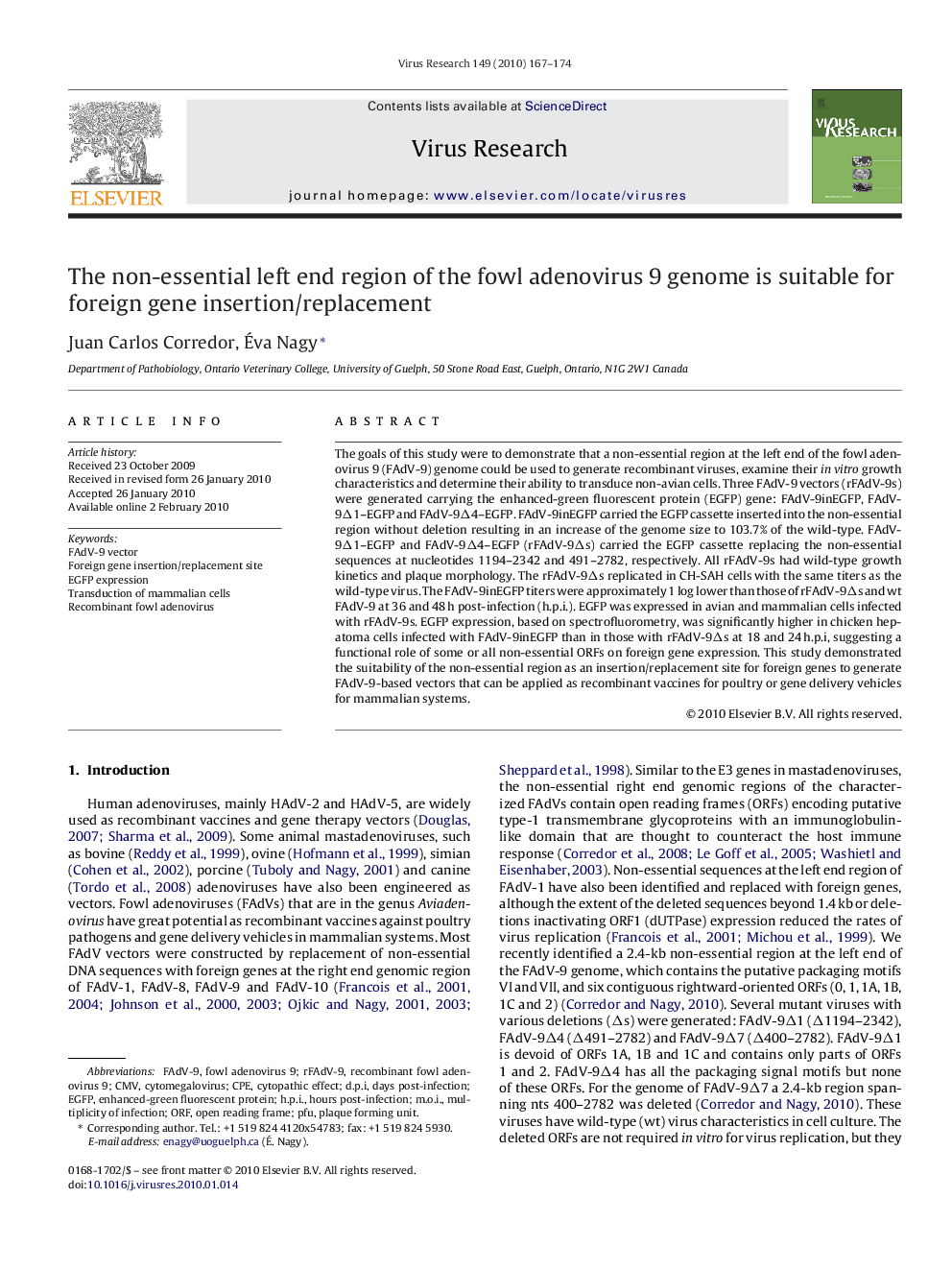| Article ID | Journal | Published Year | Pages | File Type |
|---|---|---|---|---|
| 3429518 | Virus Research | 2010 | 8 Pages |
The goals of this study were to demonstrate that a non-essential region at the left end of the fowl adenovirus 9 (FAdV-9) genome could be used to generate recombinant viruses, examine their in vitro growth characteristics and determine their ability to transduce non-avian cells. Three FAdV-9 vectors (rFAdV-9s) were generated carrying the enhanced-green fluorescent protein (EGFP) gene: FAdV-9inEGFP, FAdV-9Δ1–EGFP and FAdV-9Δ4–EGFP. FAdV-9inEGFP carried the EGFP cassette inserted into the non-essential region without deletion resulting in an increase of the genome size to 103.7% of the wild-type. FAdV-9Δ1–EGFP and FAdV-9Δ4–EGFP (rFAdV-9Δs) carried the EGFP cassette replacing the non-essential sequences at nucleotides 1194–2342 and 491–2782, respectively. All rFAdV-9s had wild-type growth kinetics and plaque morphology. The rFAdV-9Δs replicated in CH-SAH cells with the same titers as the wild-type virus. The FAdV-9inEGFP titers were approximately 1 log lower than those of rFAdV-9Δs and wt FAdV-9 at 36 and 48 h post-infection (h.p.i.). EGFP was expressed in avian and mammalian cells infected with rFAdV-9s. EGFP expression, based on spectrofluorometry, was significantly higher in chicken hepatoma cells infected with FAdV-9inEGFP than in those with rFAdV-9Δs at 18 and 24 h.p.i, suggesting a functional role of some or all non-essential ORFs on foreign gene expression. This study demonstrated the suitability of the non-essential region as an insertion/replacement site for foreign genes to generate FAdV-9-based vectors that can be applied as recombinant vaccines for poultry or gene delivery vehicles for mammalian systems.
